
I started this blog back in November of 2016.
When I first started, I had no clue what I was doing. I didn’t know anything about domain names, hosting, WordPress plugins, themes, or the basics of writing.
Over the past three years I’ve learned some important lessons about blogging:
1. Blogging is a great way to earn money on your terms.
2. Blogging is a fantastic way to meet other like-minded people on the internet.
3. Blogging is an excellent way to improve your writing and communication skills.
Creating this blog is one of the best decisions I’ve ever made because it has allowed me to connect with so many people online and it has also turned into a serious income stream for me. Here’s a look at my monthly blogging income since I started this site three years ago:
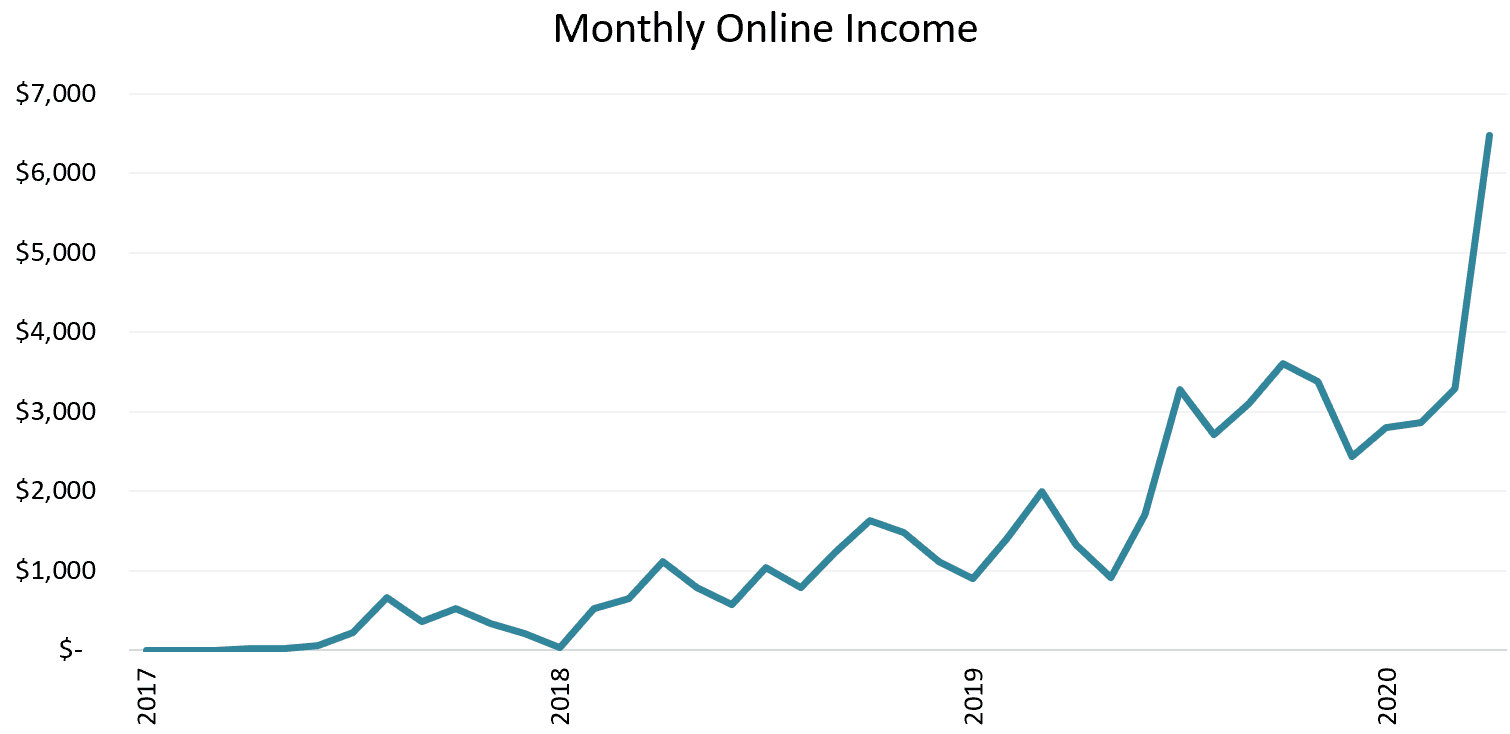
Update: I decided to quit my day job and go full-time on my blog in July 2019.
If you told me three years ago that this blog would blossom into a platform where I could hone my writing skills, interact with thousands of readers and hundreds of fellow bloggers, and also earn enough income to cover my lifestyle, I wouldn’t have believed you. Yet, here I am three years later and I still feel that I’m early on in this blogging journey.
So, if you’re ready to start your own blog, simply follow the steps I outline below. These are the exact steps that I used to create my own blog.
How to Start a Blog
While there are plenty of blogging platforms out there like Blogger.com or Medium.com, I recommend using a self-hosted WordPress site since it gives you more freedom and flexibility over the look and feel of your blog. And as an added bonus, WordPress is completely free to use!
Here are the exact steps I used to create this site. If you follow these steps, you will learn how to get your own blog up and running in less than an hour.
Note: Some of the links in this article are affiliate links, which means I earn some revenue, at no additional cost to you, from some of the services recommended here. I don’t recommend these services purely for the revenue; I recommend them because they’re actually what I used personally and found valuable when I first started this blog.
Step 1: Choose a Domain Name and Host
The first thing I did when I started this blog was head over to Bluehost and register the domain name www.fourpillarfreedom.com. This is an important first step that every blogger must complete. Don’t worry if you’ve already bought a domain name elsewhere because Bluehost makes it easy to transfer your existing domain name during the set-up process.
Once you have registered a domain name, you need to set up hosting for your blog. Your domain name is simply the name of your blog, but you actually need to host the blog on a server somewhere on the internet. For hosting, I recommend Bluehost for several reasons:
1. This blog is hosted on Bluehost. Since I personally use them and have had a great experience with them, I’m quick to recommend them to anyone else looking to start a blog.
2. Bluehost has top-notch customer service. Average hold times are less than 30 seconds and customer service is 100% in-house. If you experience any hiccups during the set-up process of your blog, Bluehost is standing by waiting to help you out.
3. Bluehost has the best prices you’ll find anywhere. You can set up a hosting plan for just $3.95 per month.
4. Bluehost offers a 30-day money-back guarantee, so if you’re unhappy for any reason you can easily get your money back.
Now that you’re ready to get started, head on over to Bluehost and click the “Get started now” button.
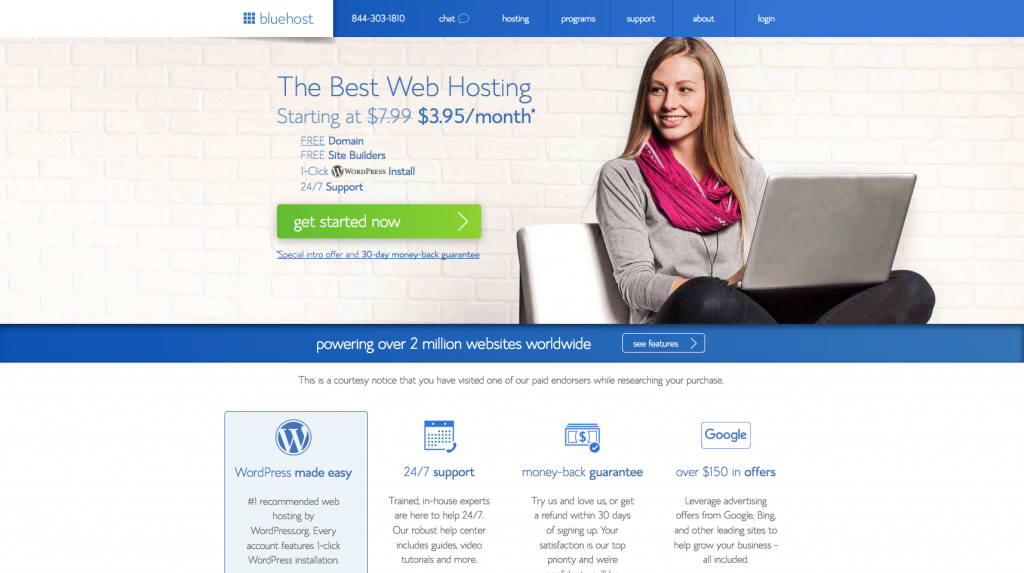
On the next screen you’ll be given three choices for hosting, ranging from monthly prices of $3.95/month up to $5.95/month depending on how many sites you’d like to create.

Once you pick a plan, you’ll be taken to a page with two options. If you still need to register a new domain, you can simply type the domain name in the box on the left and choose your desired extension (e.g., .com, .net, .org). If you already purchased your domain somewhere else, don’t worry because Bluehost will give you the details you need to easily transfer your domain.
 Once you select a domain, you’ll be taken to a new screen where you’ll fill out some basic information:
Once you select a domain, you’ll be taken to a new screen where you’ll fill out some basic information:
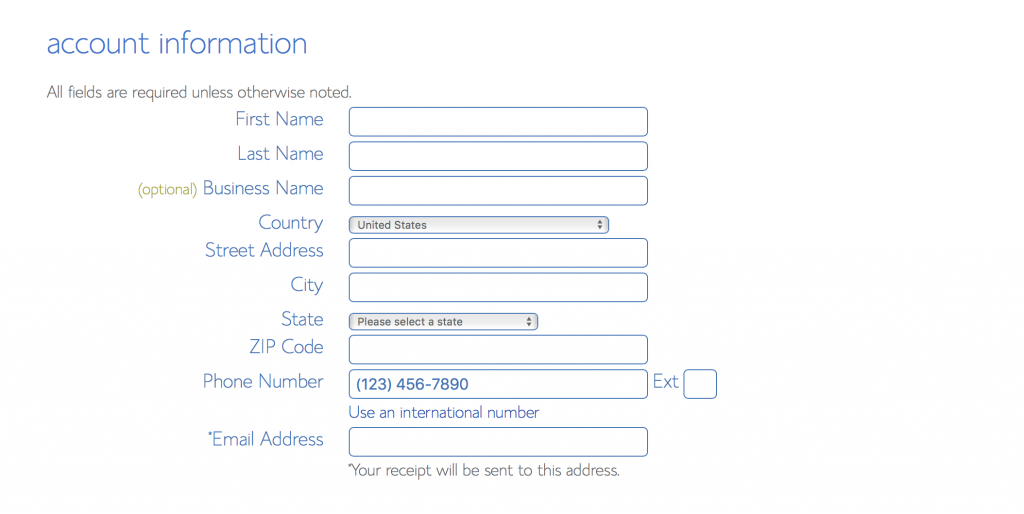
Once you fill out this information, you’ll see a congratulations page indicating that a confirmation email was sent to your email inbox. Go to that email and click the confirmation link.
After that, click the “Create your password” button.

2. Set Up Your Blog
Next, you’ll install WordPress with a one-click installation. This is completely free and Bluehost does all the work for you.
On this next screen, you’ll be prompted to create a password:
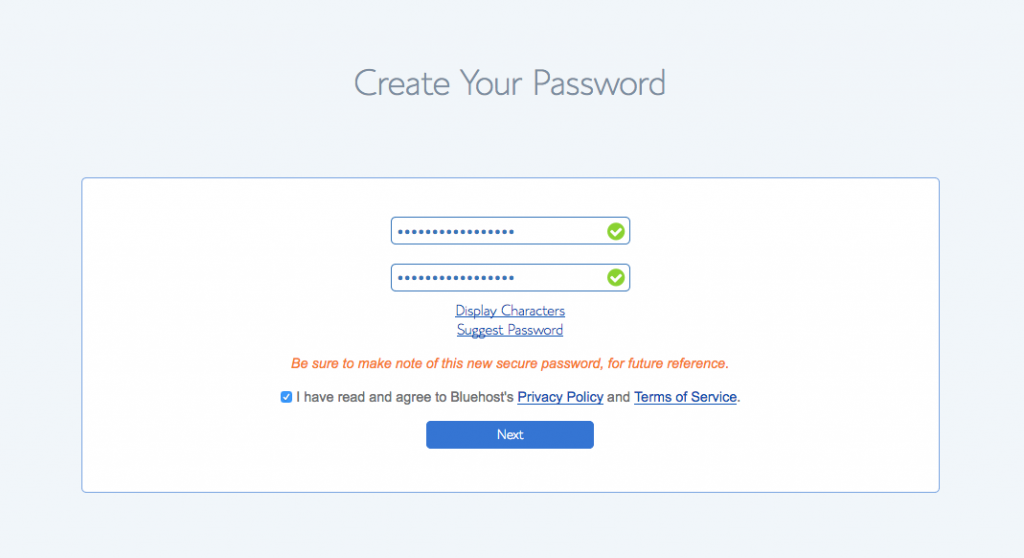
After creating a password, you’ll be taken to a Log In screen. Click the “Log In” button.
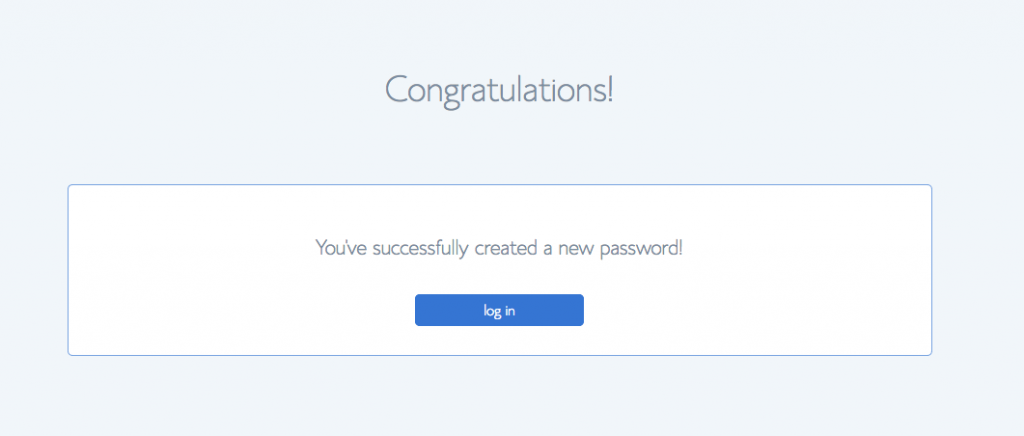
On the next page, you’ll be presented with several theme options. Choose one of the themes presented on the page. If you don’t like any of the options available, you can always change your theme later on easily.
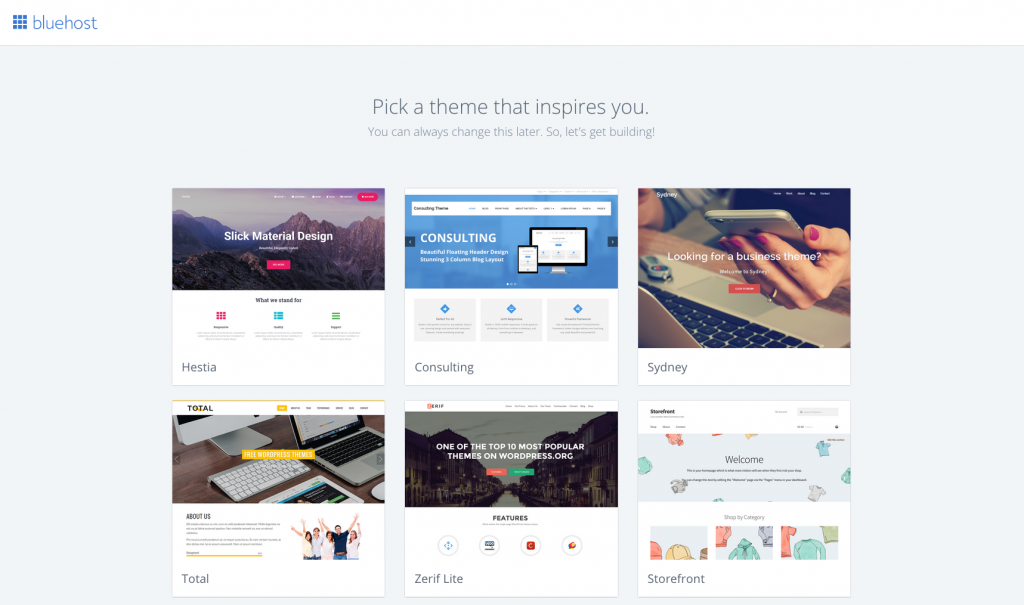
WordPress is now installing and will be completed shortly. Next, click “Start Building” to go to your new WordPress dashboard.
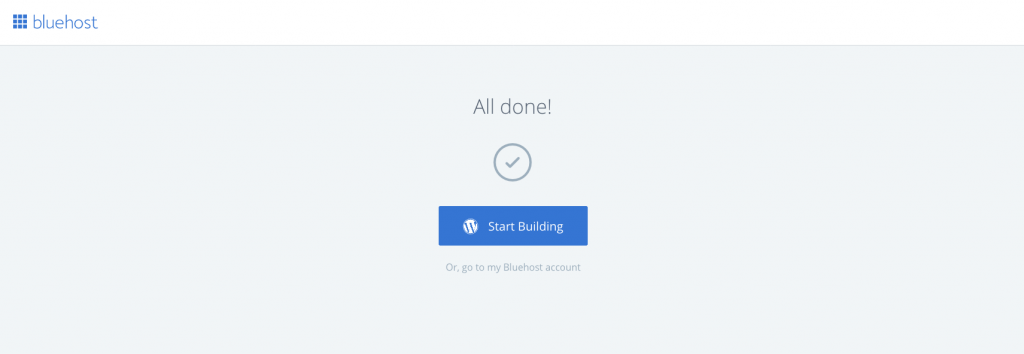
You should be presented with the following WordPress dashboard:
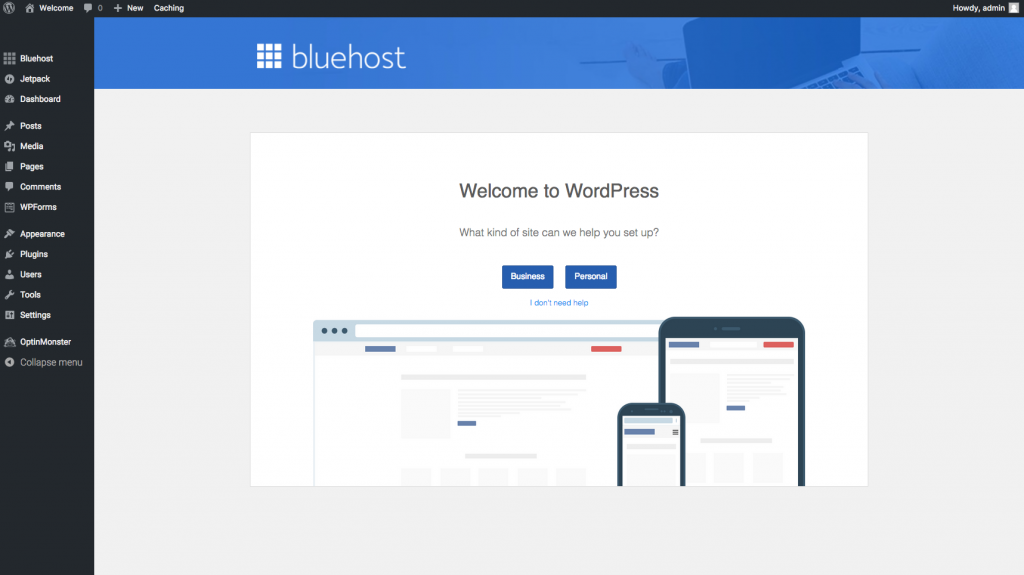
On the left-hand side of the screen, near the top, click the “Bluehost” option. You will be presented with this screen:

Currently your site will be displaying a “Coming Soon” page. In order to make your theme show up live, click the blue “Launch” button.
You will be asked to choose a Site Title and Site Description, which will likely show up near the top of your website, depending on which theme you chose.
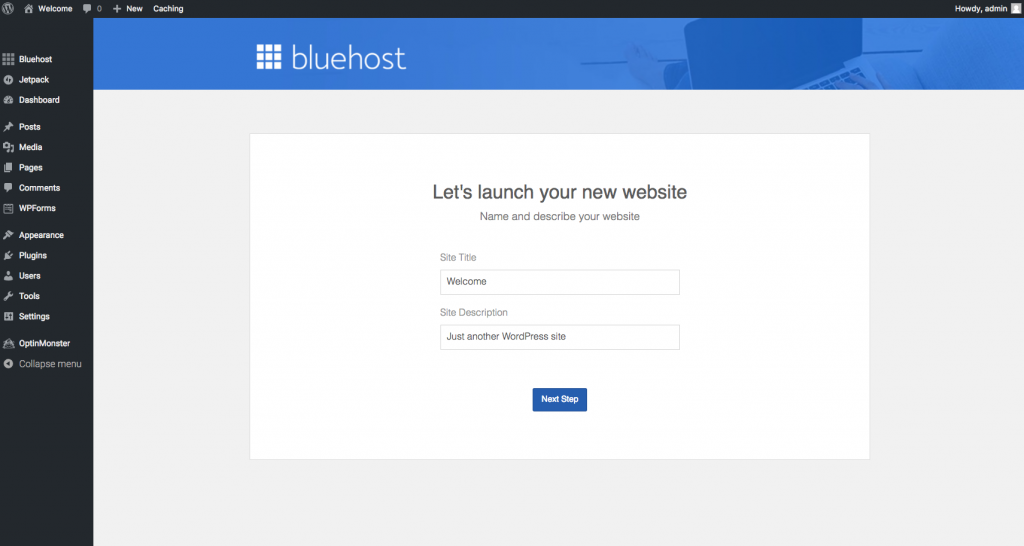
Then, click “Next Step” and you’ll be able to launch your site.
3. Select Plugins for Your Blog
Once your blog is live, I recommend adding a few free plugins to improve the performance of your site. Plugins are third-party packages that can add certain functionality to your site and improve your site in various ways. Be careful not to add too many plugins, though, as it may slow down your site speed.
In your WordPress dashboard, head over to Plugins > Add New. Search for, install, and activate the following plugins one by one:
Yoast SEO – allows you to optimize for search engine optimization. Check out the Yoast Definitive SEO Guide to learn more about the benefits of this plugin.
Social Warfare – one of the easiest plugins for adding “social share” buttons to all of your blog posts.
4. Start Blogging!
Now you’re all set up! The last step is to start blogging. Write about any topic that interests you and always keep in mind the three E’s of blogging:
Entertain: tell a story that contains a lesson
Educate: explain a complex topic in simple terms
Elevate: show people how to improve in some area
That’s it 🙂
How to Monetize Your Blog
The most common ways to earn money from blogging are through display advertisements and affiliate links.
Display advertisements are simply ads placed on the sidebar, footer, or throughout the content of your site. You get paid based on the amount of people that see and/or click on your ads.
Affiliate links are links from your site that point to third party products or services. Each time someone clicks on an affiliate link on your site and proceeds to sign up for a product or service, you receive a commission.
The easiest way to get started with display ads is to have a third party ad platform place ads on your site for you and handle all of the placement and monetization of the ads. Once your site hits 10,000 visitors per month, I recommend using Ezoic. Once your site hits 25,000 visitors per month, I recommend Mediavine.
The easiest way to earn money with affiliate links is to work with an affiliate network. I personally use FlexOffers, which is a company that acts as a middleman between companies and bloggers, and provides thousands of different affiliate links that you can use on your blog. Best of all, they pay monthly so you don’t have to wait for several months to receive your earnings.